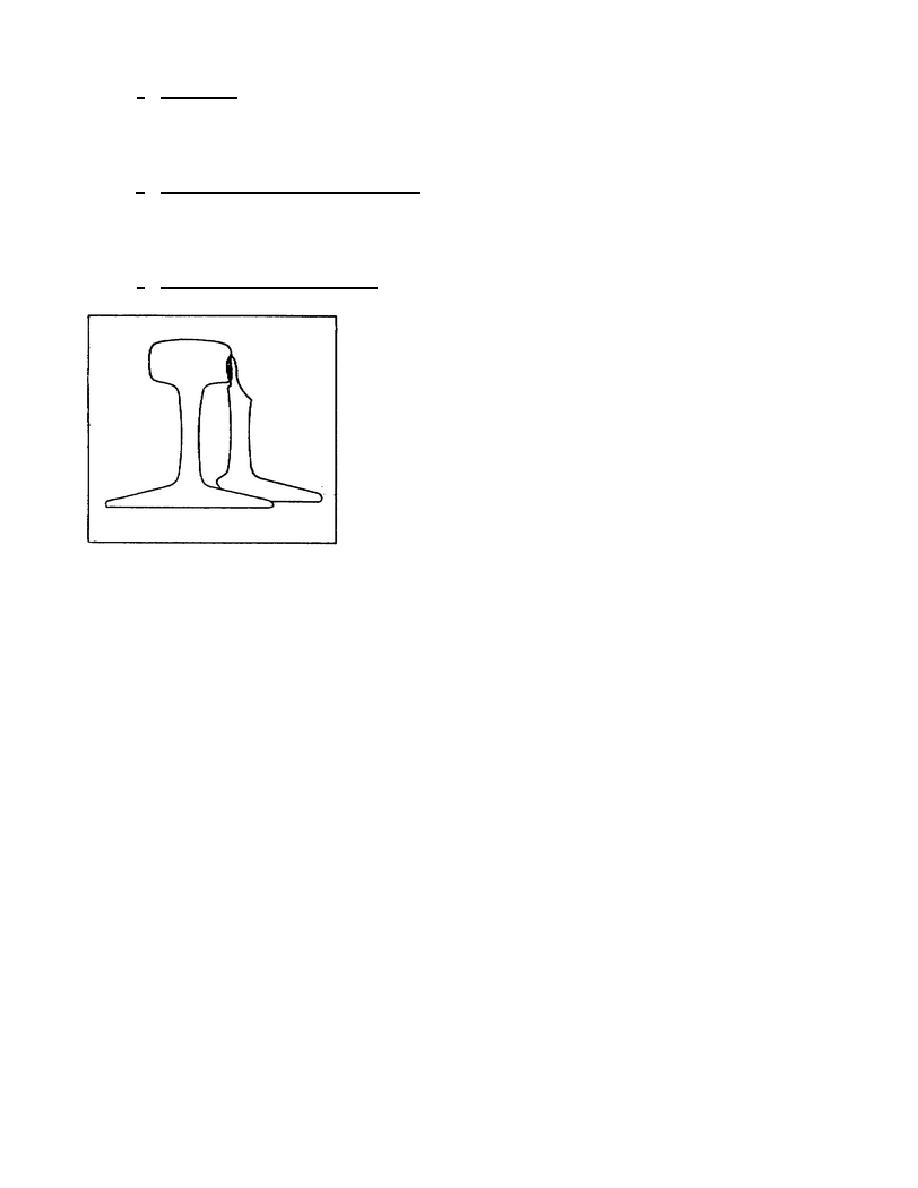
a. Guard rails are located opposite the frog on both mainline and turnout sides. They force the wheel
flanges close to the running rails so that the opposite flanges will not strike direct blows on the frog point or pass
down the wrong side of the point. Using guard rails in turnouts prevents excessive frog wear and reduces
derailment hazards.
b. Straight and curved closure (lead) rails join the switch rails to the frog. The latter are joined together
near the points by switch rods so that they are moved as a unit. The number used depends on the length of the
switch rails. The rods closest to the points extend under the stock rails to the switch-throwing mechanism, as
shown by the dotted line in figure 2.13.
c. The straight and bent stock rails are the two rails against which the switch points bear. The straight
stock rail may also be called the through rail or the through running rail.
The curve in the bent stock rail is at the theoretical point of the switch
rather than at the actual one, to protect the switch points from batter.
Turnouts designed for high-speed traffic often have indentations cut in
the stock rail to further protect the switch points and to help in
preventing derailments. The indentation is a 10-to 12-inch groove
ground along the gage side of the head of the rail. The shaded area in
the sketch points out the general area of the groove. Approximately
one-quarter inch deep at its beginning opposite the switch points, the
groove tapers to nothing at the other end.
2.9.
SWITCH PLATES
The switch points rest on switch slide plates that are planed to provide a smooth surface on which the
bottom of the points can slide. These plates extend under the stock rails and are graduated in thickness so that the
top of the point is kept slightly above the top of the stock rail. Usually, the plates have fixed or adjustable rail
braces to support the stock rails, which are subjected to the heavy lateral forces exerted by trains passing through
the turnout. Long, narrow tie plates, so-called heel plates, are used to fasten both main-line and turnout rails to
the switch ties. The heel plates are located beyond the heels of the switch points, that is, beyond the ends
41



 Previous Page
Previous Page
